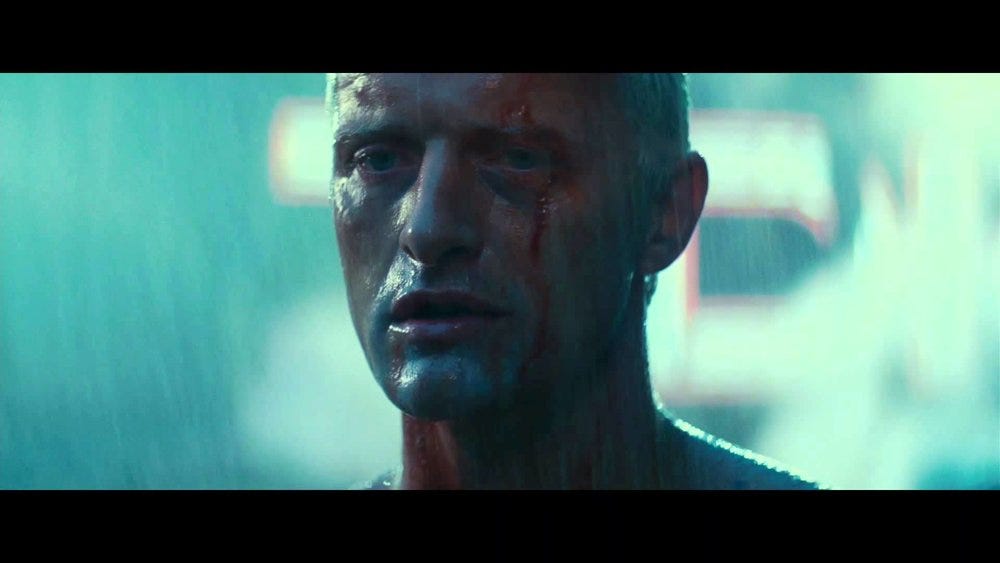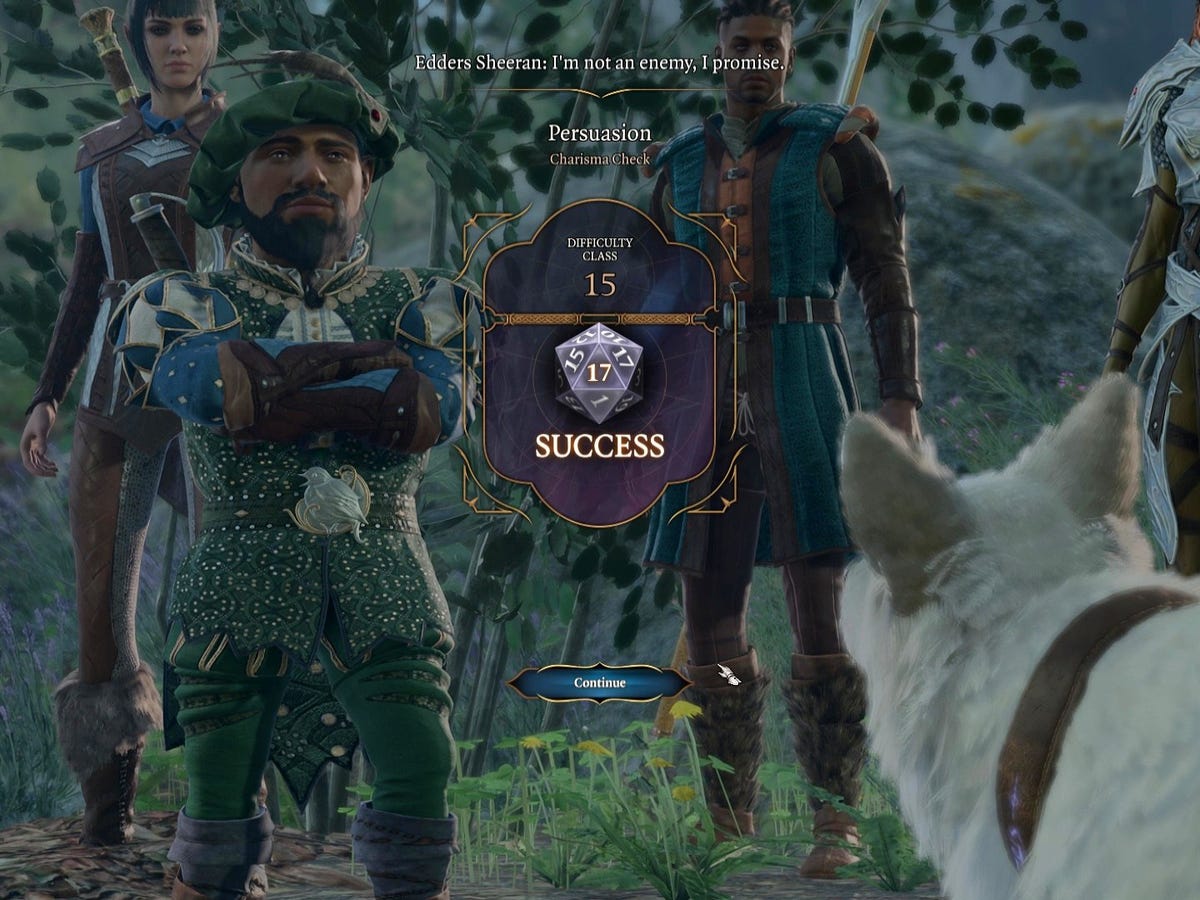When You Shouldn't Roll for Social Encounters
How to run a satisfying negotiation without dice, and when dice are actually useful.
In my Daggerheart game, I ran a social encounter without calling for any rolls at all. And I think asking for a Presence roll would have ruined the moment. But why? What was improved about this encounter by just role-playing and ignoring the dice?
Now, you’re probably thinking “Is this the same guy that wrote that article Better Social Stats in Fantasy TTRPGs? Who are you, and what have you done with Colin?”
Well I still believe what I wrote there, but I don’t think of it as a contradiction. There’s a lot of one-true-way-ism in ttrpg discourse online, but it’s never that simple. There is no approach that’s best in all scenarios. Some games benefit from the players rolling for social encounters, but some don’t. Like everything in game design, it all depends on the feeling you’re going for.
In this article, I’ll break down when I call for rolls, and when I don’t.
I’m Colin, and I’m a professional video game designer. This is Drolleries, where I write about d&d, ttrpgs, and game design.
The Key to a Diceless Social Encounter
The short answer is interactivity. If there’s no interaction, it’s not a game, it’s just an acting exercise.
Rolling is a quick and easy way to guarantee interactivity. Discussing the odds of success & failure establishes a shared fiction and gives the players a knowable impact on the NPC. But without dice, the GM needs to showcase how the NPC is affected by the players’ actions, and under what circumstances the NPC will be persuaded.
In game design, this is a feedback loop. In ttrpg circles specifically, this is known as Information-Choice-Impact (coined by Chris McDowall). Information is what the GM says as the NPC, how they communicate the NPC’s beliefs and wants; choice is the player’s input, how they try to convince the NPC; and impact is the GM communicating the NPC’s reaction clearly.
Be Obvious
Tell the players the NPC’s motivations and pitfalls. Have NPCs state their beliefs clearly, even if the players don’t ask. And when the players make an attempt at persuasion, give them clear feedback whether the NPC agrees or not, and under what circumstances they might side with the players, if at all. The most common pitfall in portraying NPCs in a negotiation without rolling is not being obvious enough.
When I first started GMing, I was afraid of being too on-the-nose with my dialogue, so I’d hide the NPC’s motivation in the subtext. I looked at how my favorite characters talked in movies, and modeled my NPCs’ mannerisms after them. But in movies, they have professional writers, actors, photographers, lighting artists, and composers all working together to make the subtext as obvious as possible to the audience. You see it on their face and hear it in the music as the camera slowly zooms in and the editor refuses to cut away for several seconds. All while the audience is paying full attention.

But in ttrpgs, you don’t have all that. I am not an actor, and my improvised dialogue isn’t great. In the time I speak one line of dialogue, one player was watching, but another player was grabbing a snack, another was sipping their gin & tonic, and another was rereading their spell to decide whether to use it or not. In the medium of ttrpgs, interactivity is most important, but in order for the players to make informed choices, the GM needs to clearly communicate the NPC’s motivations, even at the cost of “good dialogue.”
Then, once the players discover and appeal to the NPC’s beliefs, make sure to reward them. Either have the NPC agree with the players, but if they don’t, tell the PCs why. Without dice, there’s a risk of players feeling like they have no impact on the narrative. In order for a roleplaying encounter to feel interactive, even when the players fail, you should make it obvious why.
Dice as a Tool for Abstraction
Calling for a roll is a way to skip this back-and-forth, which has a couple advantages.
The first and most obvious benefit is speed. It can take a lot of time to make a social encounter feel interactive and fulfilling without rolling dice. Playing out the whole interaction loop of information-choice-impact is lengthy, but having the GM just make a snap decision without sufficient player input can be unsatisfying. If the NPC quickly agrees with the PCs, it can feel unearned, but if the NPC always disagrees, it can feel too punishing.
Rolling is faster, and it instantly feels interactive and objective. Because the odds are known by all, the players can’t feel as if they are being railroaded if they roll poorly. Failure is clearly delineated, and feels more final.
As an example, in the Fallout game I’m a player in (the system is a 5e hack by XP to Level 3), we just wrapped up our final session with an epic final battle against a cartel leader in the top floor of his New Vegas casino. After an explosive and lethal start to the fight, we were all almost dead, and it seemed like the villain might escape. So my friend playing the character Zeke (an opportunist drug-dealer) turned to the nearest goon, and instead of attacking, he offered him a valuable drug (for free!) and begged for him to leave the fight and forget this whole thing happened.
It was a creative idea, it was in-character, and it was believable. We could all imagine a world in which this low-level thug, after witnessing three of his fellow thugs die brutally and seeing his boss turn to flee, might decide to just take the drugs and escape with his life.
But at the same time, it would be too powerful for our GM to just allow it to succeed. It would feel like he was taking it easy on us, especially in the final battle of this year-long campaign. Surely success shouldn’t be guaranteed.
And we didn’t have the time for an extended roleplaying scene in the middle of combat, nor would it benefit the story to learn the internal motivations and flaws of this random goon.
This was the perfect time to call for a roll, and that’s what our GM did. He gave Zeke advantage because he thought it lined up with the NPC’s presumed motivations. And the roll succeeded! It was an awesome moment, and I don’t think that simply making a ruling without using dice would have fit the moment better.
Just Playing Your Character
Another effect of rolling in social scenes is that players don’t have to learn and engage with an NPC’s motivations. This may sound like a bad thing, but I don’t think it has to be. Like everything, it depends on the genre you’re playing in.
In many action movies, the protagonist doesn’t engage deeply with the motivations and beliefs of minor characters. They have a specific personality and way that they talk to people, and it sometimes goes well and sometimes doesn’t, which creates drama. John Wick is always gruff and plain, regardless of who he’s talking to. Sometimes he successfully intimidates someone, but sometimes they talk circles around him while he just rolls his eyes and reaches for his gun.
Some games benefit from just letting the players play their character and rolling to see if it works. Especially with strong archetypes and larger-than-life personalities, the fun is in roleplaying the protagonists, not necessarily diving into the internal life of the NPCs.
As the GM, you can still impose advantage or disadvantage (or your system’s equivalent) to attempts that appeal to a particular NPC’s motivations or pitfalls. But asking to resolve a social encounter with a roll means that your players don’t have to learn all that information in order to move forward with the fiction.
But in games where the players have to appeal to an NPC’s motivations every time, the players are encouraged to change their characters’ personalities to fit who they’re talking to. This can sometimes lead to the dilution of their characters as they become more like agents of the players’ will rather than characters in their own right.
To reiterate, I think this is just a matter of playstyle, there’s no right or wrong approach. In a more story- and character-focused game like Slugblaster or Monster of the Week, I might call for rolls to persuade an NPC so that players can find creative uses for their good stats or abilities, which encourages them to roleplay to their archetype. But in a more OSR-inspired situation-focused game like Mothership or Mythic Bastionland, I might not call for rolls in order to encourage players to learn the NPCs’ motivations and figure out how to use them for their own advantage.
My Diceless Daggerheart Negotiation
Back to my experience running Daggerheart, I ran a social encounter two weeks ago that rocked, and we didn’t use any dice.
In Daggerheart, the PCs are heroic, powerful, and resilient; they have dramatic backstories and complex party relationships. For these reasons, I think it’s suitable that the system expects that players will make rolls in social situations, and that’s what I’ve been doing. I want my players to play their character, I don’t necessarily want to outline the motivations of each and every minor NPC, and I want to reward the bard player for having high Presence and a handful of spells that increase her chances of success.
But, two weeks ago, my players entered Twyllych Wode, a forest home to the elves where time and space are warped by ancient elven magic. In order to traverse the wode, I ran them through a time-traveling pointcrawl that looped back in on itself to create the feeling of disorientation and mystery. I wanted them to feel like they were in a truly foreign world that worked in a way that was unknowable to them.
So when they met the elf Grey Morning Wind of Regret, I wanted the encounter to feel mysterious and tense. I wanted the focus to be on the elf NPC, who they were, what the elves wanted, and how the PCs could convince the elf to let them pass unharmed. I wanted my players to be curious, to ask questions, and to interpret the elf’s cryptic answers.
And it went well! Some of my players really engaged with this, but specifically my new players struggled a bit to understand the possibility of what they could do. (see my previous article Why New Players Struggle with Fiction-First OSR Play). But I still think it was the right call for the scenario, it made the encounter feel more mysterious, and I think simply making a roll to persuade the elf would have broken this sense of mystery.
What I’m Reading
Mike Mearls described the difference between realism and narrativism and how it affects player behavior. Although any strict delineation is just a line in the sand, his definitions helped me understand why I struggled with some Powered by the Apocalypse games as a player.
Between the Quinn’s Quest review and this article by JFaceGames on its system for hexmap exploration, I am itching to run the recently-Ennie-nominated Mythic Bastionland. I feel like I finally understand how to run a hexcrawl that isn’t just a resource-whittling slog.
Skeleton Code Machine’s article about dice placement in board games has inspired me to design a ttrpg featuring this mechanic as a way to shift more towards input randomness. I also learned that the term is “worker placement” and not “work replacement,” which is a mistake I can’t believe I made.
Cat’s Controller Corner wrote about $80 video games, rising costs of game development, bad management, and the difference between inflation and buying power. It’s tough out there.
The Digital Meadow has a wonderful article about the impact of capitalism on modern feminism titled “Who’s afraid of the broke boyfriend?” that I couldn’t resist clicking on. Am I the broke boyfriend?







I enjoyed this article. Thanks for sharing your experience!
I definitely resonate with this quote: "This can sometimes lead to the dilution of their characters as they become more like agents of the players’ will rather than characters in their own right. "
Some players play without considering that their character provides a unique lens to view the world they're temporarily inhabiting. But every player is different! Thanks for writing this one, I enjoyed the recounting of the encounter.